How do you choose the best color of lipstick, eyeshadow, or blush for your skin tone? Makeup artists almost have magical ways of using different colors. But each time you like a color of eyeshadow or lipstick color you like and apply, the result may not be as fascinating as on the model. So, what is the secret that makes those models on social media look so flawlessly beautiful? Well, most renowned artists have a sound knowledge of makeup color theory that helps them pick colors perfectly. Read on to know everything about the interesting world of makeup color theory!!!
Table of Content
What is color theory for makeup?
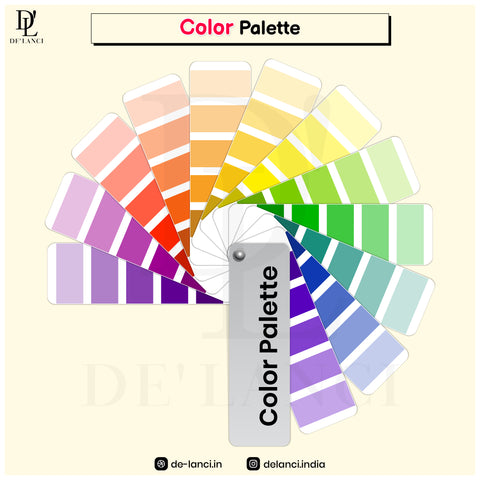
Color theory for makeup is the art and science of how colors are related to each other and the visual effect that they have. This theory will help you choose makeup colors for youself and create desired effects. Makeup products come in rainbow colors having different effects like matte, shiny, pearlescent, metallicized, translucent, sheer or gloss.
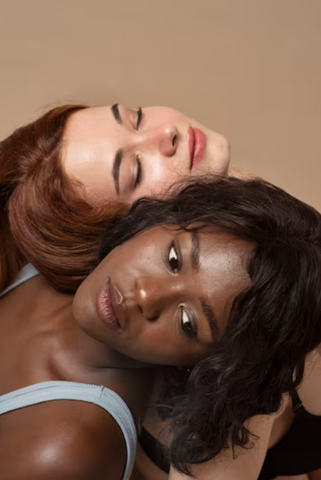
Color makeup theory will help you make the right shade from the lot along with the finish for the face or body to bring out the best result on the skin tone. Using colors correctly help bring out emotions and create lasting memories. It’s a skill that you will need time to master but with the help of our detailed guide it should be easy!
What is a color wheel?

The color wheel shows the relationship between the 12 different colors that are present on the wheel. It shows how mixing different colors result in different shades that turn from light to dark.
- There are 3 main colors in the wheel – red, blue and yellow. Mixing these colors give off different categories of colors.
- The main 3 colors are called the Primary colors, which on mixing give off Secondary colors, and mixing the Secondary colors give off Tertiary colors.
- While the colors sitting next to each other show the result of their mixing, those on the opposite side neutralize or cancel each other.
- In short, the color wheel explains the relationship and effects of different colors with each other!
Different Types of Colors in the Color Wheel
The color wheel is divided into three categories: primary colors, secondary colors, and tertiary colors.
1. Primary Colors

Red, Blue, and Yellow are the Primary colors in the color wheel.
You can mix the Primary colors to create almost any other color in the color spectrum. Mixing all the Primary colors together in the same amount results in the perfect brown color; mixing them in different proportions give off varying shades. All of this makes the knowledge and guide to makeup color theory so important!
2. Secondary Colors
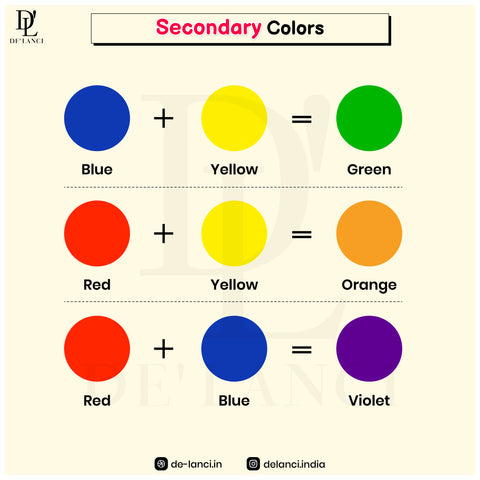
Secondary colors are created by mixing 2 Primary Colors:
Green = blue + yellow
Orange = red + yellow, and
Purple = red + blue.
Mixing 2 Primary colors in different proportions helps create variations of Secondary colors. Thus, while mixing equal amount of yellow and red results in classic orange color, adding more red than yellow will give a darker shade of orange!
3. Tertiary Colors
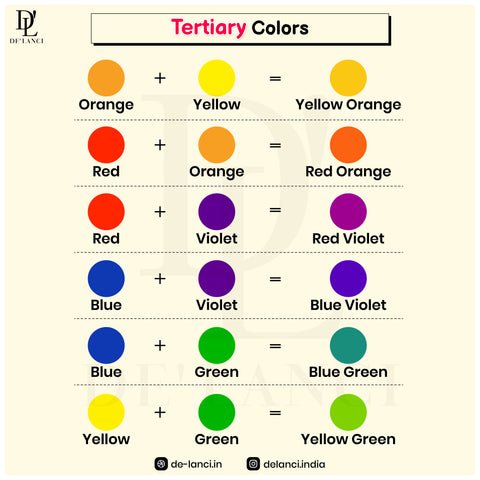
Tertiary colors result from mixing Primary colors with Secondary colors:
Vermillion = Red-orange,
Amber = Yellow-orange,
Chartreuse = Yellow-green,
Aquamarine = Blue-green,
Indigo = Blue-purple, and
Magenta = Red-purple.
You can get these colors by mixing equal amounts of any primary color with the adjacent secondary color. Like, mixing equal amounts of red and orange that sits next to each other in the color wheel results in the Vermillion color.
The names of the colors in the color wheel may vary according to cultures and countries, but the theory of colors for makeup remain the same!
4. Complementary Colors
Complementary colors are those that sit opposite to each other on the color wheel. These are the colors that cancel or neutralize each other when mixed together thus making them very important for makeup!
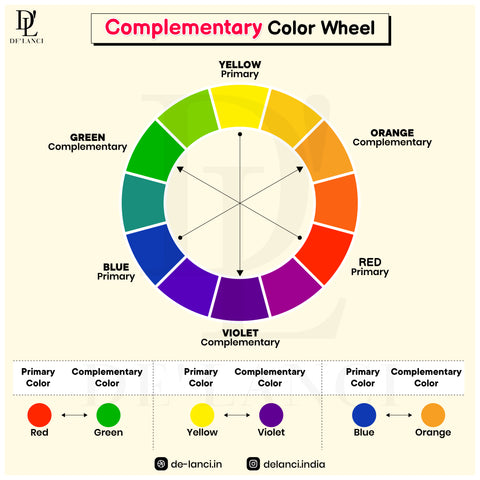
- Mixed in equal proportions, Complementary colors cancel out each other giving off grey color.
- To neutralize a blue spot under the eyes, mixing an orange concealer is the best makeup solution to a flawless look!
- Thus, Complementary colors are used to cancel out unwanted spots or shades on the face.
- These are used as color correctors in makeup and help conceal dark spots, red patches, blue marks or other unwanted spots that stand out on the skin.
- Placed next to each other, Complementary colors give off strong and vibrant contrasts!
- Think of the striking contrast of using orange and blue side by side as your eyeshadow colors!
- So, Complementary colors are also used to create makeup effects that make a loud statement by using them to stand out next to each other.
- Thus, you can create noticeable eyeshadow effects of bronze-orange by using the complementary colors!
5. Analogous Colors

Analogous means similar. Analogous colors are group of colors that have similarities with each other. Any color on the color wheel with 2 colors to the right and 2 colors to the left are called Analogous colors . These are used as makeup colors for creating same-toned makeup looks that are ideal for daytime and professional looks.
4. Warm colors and cold colors
Colors are termed as warm and cold depending on how we perceive them.
- Warm colors are those that are more noticeable and the human mind registers quickly. These colors stand out at all times making them instantly noticeable. These have an underlying tone of yellow to them which makes them so noticeable.

- Cold colors are those that the human eyes register slowly as they do not stand out loudly. These colors have a less impactful and more soothing effect on the human brains giving. These colors have a touch of blue to them that gives them the term Cold colors.
The knowledge of Cold and Warm colors will help you to match foundations and concealers according to skin tones.
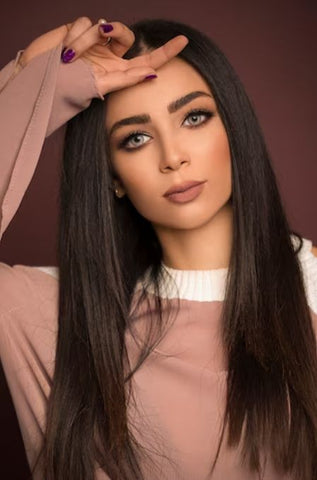
- Warm color output:
- Skin tone: Dark, golden, medium yellow, light tan
- Eye makeup: Bronze, Gold, Brown, Orange
- Blush colors: Peach, Orange, Bronze
- Lip makeup: Beige, Brown, Orange, Nude
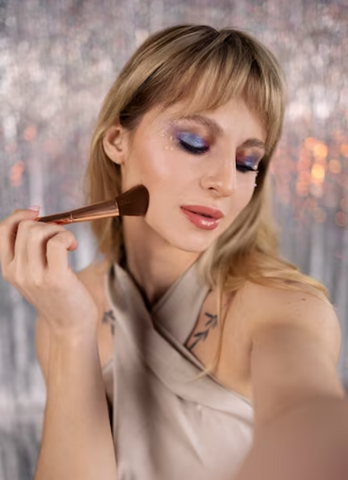
- Cold color output:
- Skin tone: Fair, olive, medium rosy
- Eye makeup: Blue, Silver, Purple, Black, Grey, Brown
- Blush colors: Peach, Fuchsia, Cool Pink
- Lip makeup: Classic Red, Wine, and Pale Rose.
Importance of Color Theory for Makeup
The Color theory for makeup is important because it tells us about the different categories of colors, their composition, and their effect on different skin tones. You can match shades with skin tones more easily, and also bring out different effects through the emotions that the colors give off.
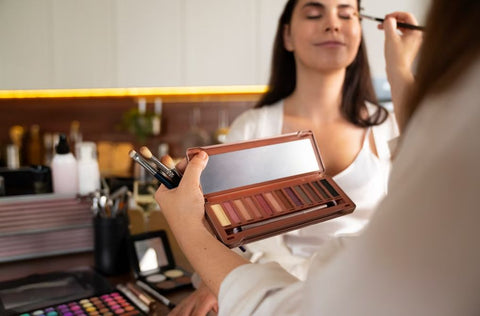
- Using the makeup color theory makes it easy to create makeup looks for formal, informal, or loud occasions and events using analogous or complementary colors.
- You can easily match the colors with a person’s outfit and pick the apt blush, eyeshadow, and lip colors to create the desired look.
- Knowledge of the color wheel and their categories is one of the best makeup tools that will help you make choices confidently and create awesome looks!
1. Matching products for skin tones
Every person has a different skin tone that is the result of the skin’s pigments that varies from very dark to very light or pale color. Using the color wheel theory, we can easily create the exact shade of brown foundation by mixing the primary and secondary colors.
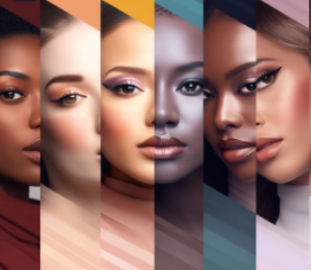
The following are examples of how the makeup color theory can be used effectively for different skin tones:
- Olive brown = green + violet with a blue bias
- Russet brown = violet + orange with a red bias that is ruddy or warm
- Citrine brown = orange + green with a yellow bias also referred to as sallow or golden.
2. Matching products for the right look
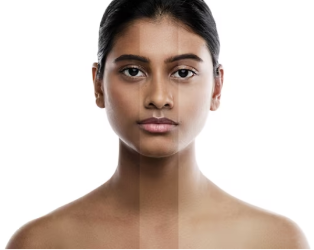
From everyday makeup looks to special effect and event looks, the color wheel makeup theory can bring about the right impact!
- Sophisticated subtle looks: When you wish to create a sophisticated subtle look that you wish to wear to office every day, you can use the analogous colors with the soft and natural brown-toned output.
- Dynamic looks: On the other hand, opting for dynamic looks means the use of bold and contrasting or complementary colors that stand out aloud.
By discerning the placement of the colors on the wheel and whether they are cool or warm, you can bring out the exact emotion of the onlookers from the makeup look!
3. Figuring out undertones

Your foundation should literally disappear into your skin giving a smooth and flawless finish that looks natural! For this, you need to know the tone and undertone of your skin and the color of the product. This is where the makeup color wheel theory comes in handy!
- Cool Skin Tone: This is a skin tone with little pink in the skin where the veins are apparent giving off a blue/green undertone to the skin. Such skin tends to burn easily under the sun and they look stunning in silver jewellery and accessories.
- Warm Skin Tone: People with such skin tones have yellow or golden-olive undertone and tend to tan easily under the sun. They look best in gold jewellery and accessories rather than silver.
- Neutral Skin Tone: Such skin carries both pink and golden undertones and look good in both gold and silver jewellery.
4. Creating the best-blended makeup look
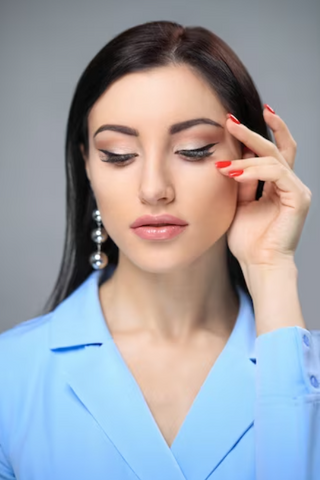
The knowledge and use of Analogous colors or the colors that sit next to each other on the color wheel ensure the best blending and natural-like output.
- Bright and warm looks: Take for example, orange, red, and yellow are Analogous and can be used to create bright and warm looks that also blend into the transition shades beautifully.
- Blended colors looks: Similarly, when wanting to create a blended cool look, the use of rich pink, berry hues, mauve, and purple will help the color gradients blend into each other without creating and sharp divisions.
- Noticeable looks: When using Complementary colors for sharp and noticeable looks, the trick the best output is not to over-blend the colors. Making the mistake of blending Complementary colors too much will result in brown muddy output!
5. Opting for the right colors

Makeup color theory will help you pick the right product for a skin tone, be it yours or your clients’. This way you will know which nude lipstick colors will look best on the particular skin tone. This is extremely important as nude colors on the lips should be able to neutralize the lip’s natural pigment. The best option is to pick a beige or brown that is a Complementary color to the natural lip color.
- Purple-toned lips: This way, if your natural lip color is purple-toned, opt for a nude lipstick that has orange or yellow undertones.
- Olive-toned lips: In case of olive undertone lips, go for a nude lipstick that has red undertone.
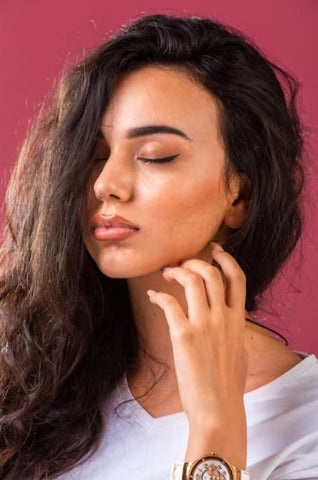
- Monochromatic shades: One of the most trending makeup looks involves the use of monochromatic colors and the use of color theory becomes very important again. Take for example the use of an orange-toned eyeshadow color.
- Analogous colors: You can match it up with an Analogous orange-colored blush and lipstick that has orange tone to it too. This will result in a completely warm yet subtle monochromatic makeup look!
How to use the color wheel to improve your face makeup
Here are some concrete ways to use the makeup color theory to improve your face makeup for everyday looks or any other special event or occasion looks matching your outfits!
1. Color correcting the facial skin
The right color correcting of the facial spots and blemishes is one of the key factors that contributes to the success or failure of the look! Covering up all dark circles, blemishes and spots helps bring out the flawless skin look on which you can bring out any look effortlessly.
- Color correcting is the use of a product that effectively cancels out or neutralizes any natural discoloration of the skin.
- These can be countering the dark circles under the eyes, covering spots, redness, blemishes, or any colored patches on the face.

Since now you know that Complementary colors cancel out each other, here’s how to use color correcting products for different purposes effectively.
- Dark circles with blue undertones should be covered using orange, peach, or light pink concealers.
- Hyperpigmentation with black or blue tones also should be neutralized using orange that is opposite to blue on the color wheel.
- Red patches or redness of the skin should be covered using green color corrector that sits opposite to the red color on the wheel to be neutralized effectively.
- Age spots and broken capillaries that are usually purple in color can be easily covered using color corrector with yellow undertones as they sit opposite to each other on the color wheel.
2. Color theory foundation for the face

An effective way to getting a flawless look is to use the foundation that absolutely dissolves into the skin tone. You can easily create your customized foundation tone using the knowledge of the color wheel theory now!
- The best way to create the right foundation is to add some white to a regular foundation to lighten it in case you want to brighten the skin.
- To get the exact match with the skin undertone, add one of the Primary colors and arrive at the target shade. It is all about balancing the colors to arrive at the right shade.
3. Color theory for blush
Using a hint of the right blush color on the face gives it the healthy flush that looks so natural! On the other hand, blending in a color that does not match the skin tone is sure to give out an unnatural vibe to the entire makeup look!Finding out the right blush color for a particular skin can be again done using the makeup color theory!
- Use a color that is Analogous to the skin tone and blend it into the skin for that natural color look.
- You can also create the custom color by mixing the shade that is similar to the skin tone.
- Remember, that Fuschia, pink, and berry are meant for cool undertones, peach and coral for warm skin undertones, and mauve is used for neutral undertones.
4. Right color for the right occasion
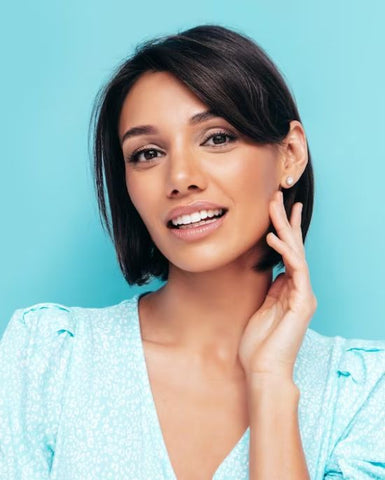
Makeup color theory is used all the time to the right makeup colors for different occasions and events. This helps create the mood and elicit the exact emotion from people looking at it.
- For example, the use of soft pink and red on young girls can bring out the emotion of demure damsels waiting to be approached!
- Likewise, using bright neon shades on your eyelids for the evening party shows how bold you are and ready to take on some high times!
5. Create feature effects
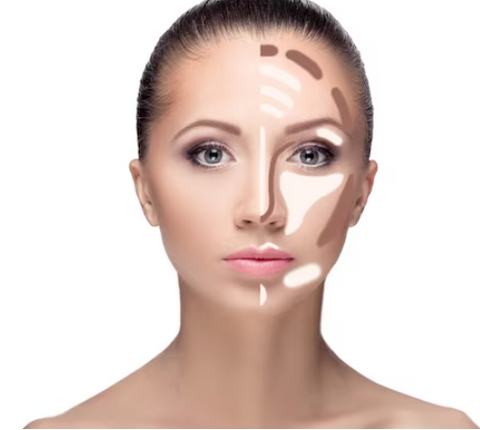
Makeup colors can be used effectively to visually alter the shape of the face or give it a more chiselled look. Using a darker shade of brown compared to the skin tone creates the highlighting effect of light and shadow that can slim the look of the nose or tighten the jawline. The trick is to use the shade according to the person’s skin tone so that it blends into it seamlessly creating the illusion of the altered look!
How to Use the Color Wheel to Improve Your Eye Makeup
Keep the color wheel makeup theory in mind when choosing your eyeshadow colors and their shades.
- Firstly, decide on the cool or warm tones for the subtle or bold look.
- Moving on with glamorous looks, match the tones of the makeup colors with that of the skin undertone.
- When wanting to go bold, opt for Complementary shades that stand out prominently.
- The best way to make your eyeshadow color stand out is to apply a color that is Complementary to the color of the iris. Conversely, give it a subtle look using a shade that is Analogous to the iris color.
1. For brown eyes
For brown eyes use shades of blue or purple for a fascinating makeup look.
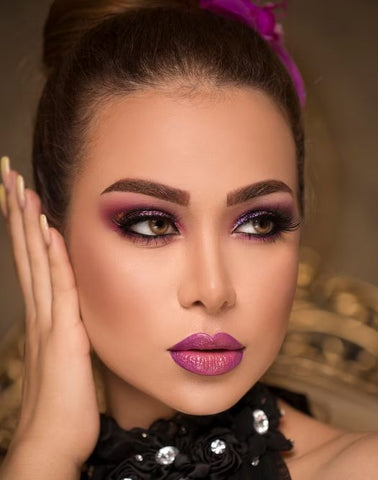
2. For blue eyes
For blue eyes, use shades of orange and yellow and get an impressive makeup look.

3. For green eyes
For green eyes, opt for shades of red or pink and bring alive the look of the eyes.
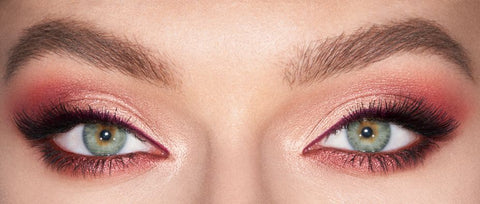
4. For hazel eyes
For hazel eyes, go for shades of orange, gold, or pink to give them an awesome look.
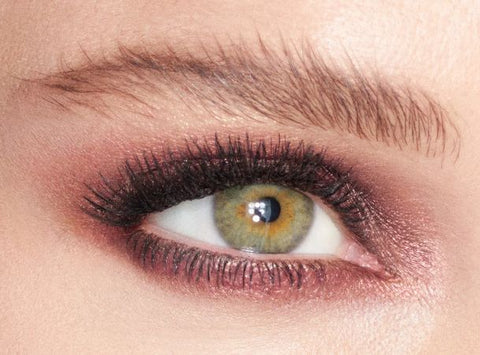
- A good way to bring you eye makeup colors is to coordinate it with the color of your lips! Though the standard option is to wear nude colors on the lips for bold eyeshadow shades, you can vary it when wanting to show eye-catching makeup.
- You can always opt for the Complementary color for your lips, but just go by the thumb rule to stick to the same tone.
- Take for example, sea-green eye makeup color that is paired with wine-colored lipstick! So long as the wine has cool undertones, it perfectly matched the cool tone of the sea green giving it a bold but balanced look!
5+ Shades to Wear Together, According to The Makeup Color Wheel
Here are some suggestions for your makeup for different occasions using the makeup color wheel theory! Pair them with your outfits as per the time and place where you’ll be going wearing them and present the perfect picture of yourself!
1. Turquoise eyeliner with coral cheeks
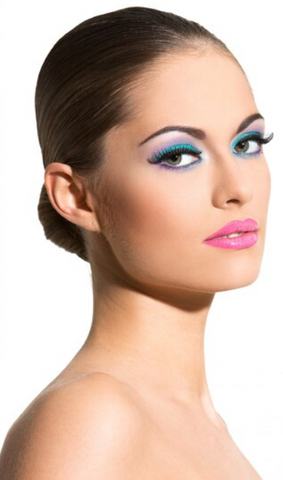
Make a strong statement with these Complementary colors as you use the cool-toned turquoise color as eyeliner along with a cool coral for the cheeks. It’s ideal for any informal event in the evenings!
2. Blue eyeshadow with coral lips

The trendy blue eyeshadow color on your lids will go wonderfully well with a cool-shaded coral colors on your lips. Complementary, but attractive, it can be your perfect wear for any party evening!
3. Yellow eyelids with purple eyeliner
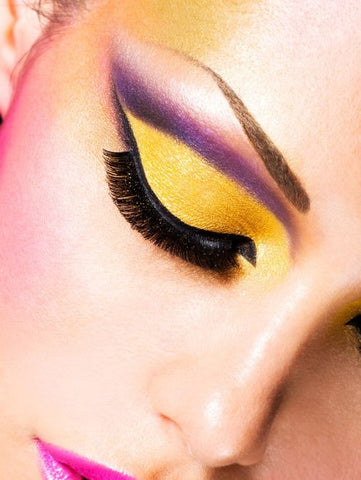
Wear the popular yellow with the sunshine hue on your eyelids and highlight it using a purple eyeliner along the upper lash line. Complementary in nature, these 2 colors have a royal appeal about them and will give you that kind of effect when worn together!
4. Green eyeliner with pink blush
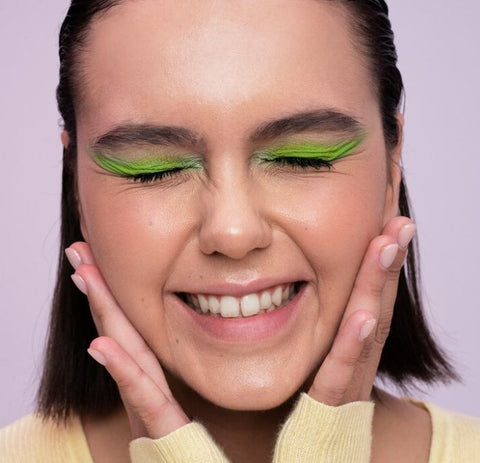
When wanting to go subtly bold, this is the Complementary combination to opt for! Use a green eyeliner pencil to line the lash line and match up the cool-toned eyes with a pink-colored blush on the cheeks for the perfect Complementary accent!
5. Golden eyelids with blue mascara
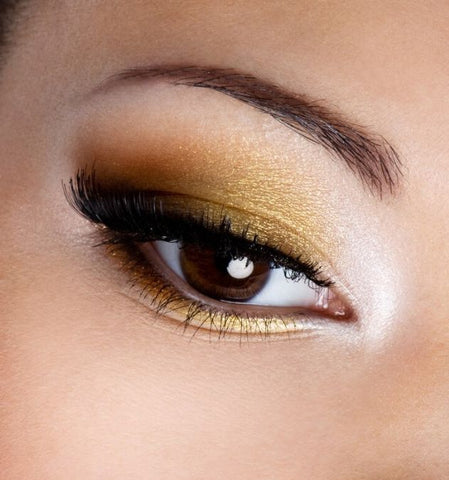
Give yourself the luxurious makeup look with a shimmering golden color on the eyelids that you can highlight with the immensely popular blue mascara color on the lashes!
Wrapping up
As a makeup artist, if you are new to the color wheel theory, the detailed explanation of the topics related to it should have you covered now! You will never be confused again with the different colors that most makeup companies offer. You can use their shades to match the skin tone especially when it comes to foundations. But coming to the palette of colors for your face, it’s good to have the complete range like DE’LANCI 54 Color La Catrina Eyeshadow Palette for multi-use. Comment below and tell us how the guide to color makeup theory has helped you get the right looks!


